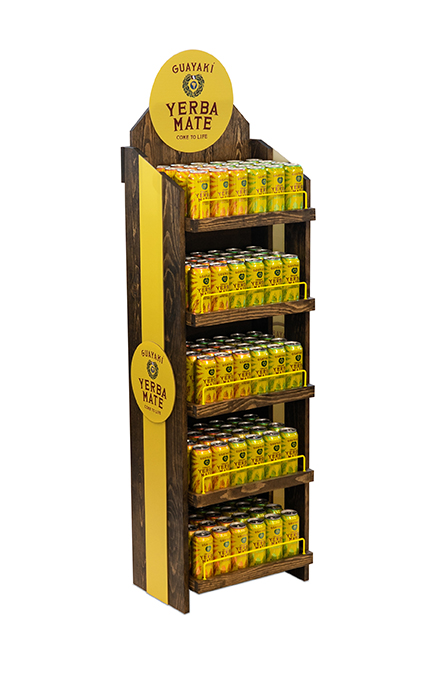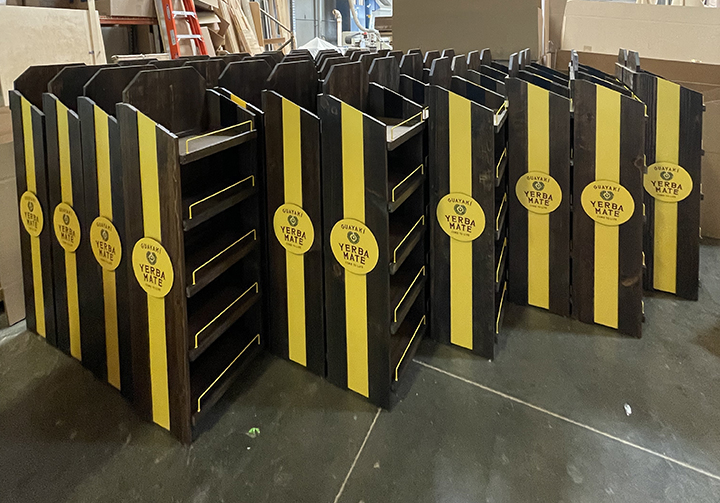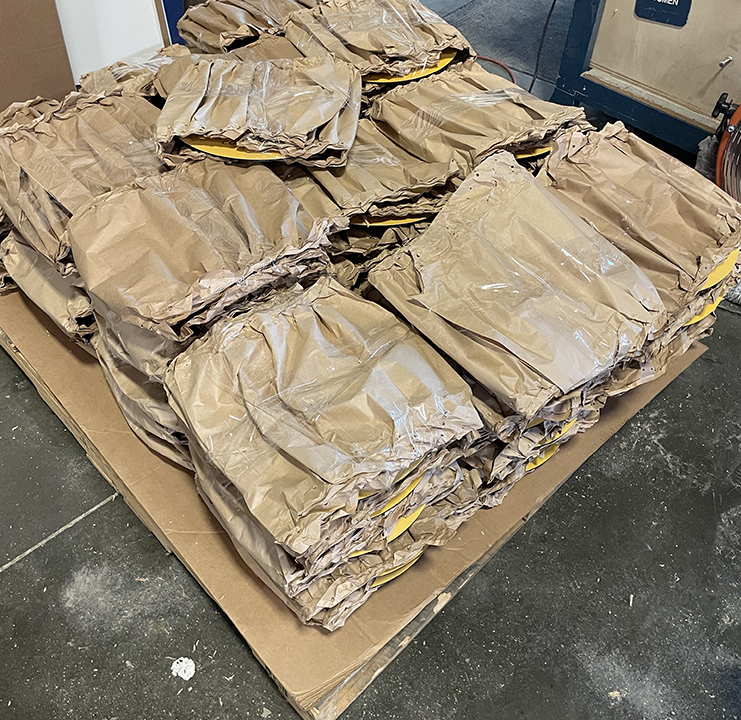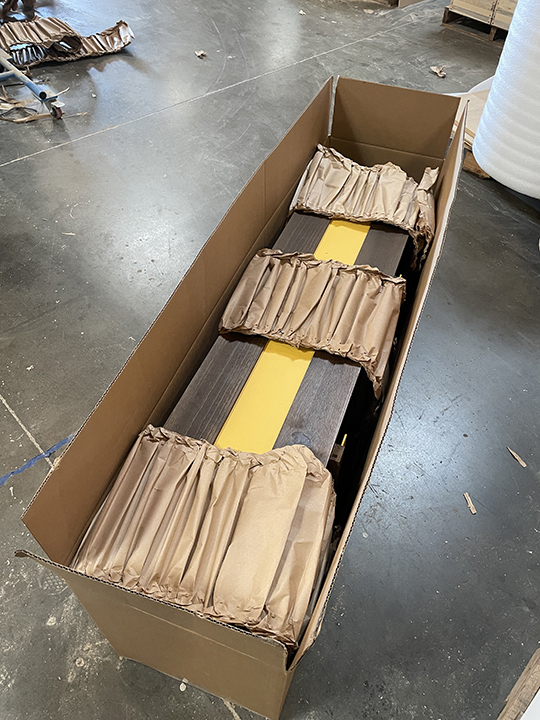With the growing concern over climate change, it has become increasingly fashionable for companies to adopt sustainability goals. Enlightened companies are very focused on creating products that use sustainable materials, including high levels of recycled content and as minimalistic packaging as possible. Companies like Allbirds use sustainable materials like Merino Wool, sugarcane-based EVA, and recycled plastic bottles to make its footwear, which it claims has a 30% smaller carbon footprint than a standard pair of sneakers on the market. There are lots of other examples. But when it comes to creating eco-friendly sustainable retail POP display fixtures, there has been far less innovation, less investment, and fewer examples of success, particularly when it comes to permanent displays. In today’s post we’ll look at one example of a visually attractive, highly functional, eco-friendly, sustainable retail display fixtures that we created for Guayaki Yerba Mate.
It is no surprise that an organic beverage company with a legal name like Guayaki Sustainable Rainforest Products, Inc. would have a mission that is tied to conservation, sustainability and environmental regeneration. When we began working with Guayaki to develop a sustainable floor display for its line of Yerba Mate Teas, the company’s unwavering commitment to all things eco-friendly became clear very quickly, starting with the core materials all the way down to the packaging.
We ended up creating this 1-sided, 5-shelf floor recycled display which features a relatively small footprint, 10-case carrying capacity and brand-building graphics.

After considering numerous options, we selected Beetle Kill Pine as the core material. Beetle Kill Pine has an interesting back story. Over the last 20-25 years, one of North America’s greatest environmental disasters has been quietly unfolding. An invasive species of the Mountain Pine Beetle has destroyed millions of acres of pine forests and billions of trees in the Western United States, Mexico, and British Columbia. Some experts estimate that 80% of the pine forests in North America have been destroyed to date.

Pine trees in the Sierra Nevada have been dying off at an alarming rate with estimates of nearly 30 million trees lost in a single year. Aggressive bark beetles, a severe drought and unusually hot temperatures have combined to devastate large swaths of pine trees in the Sierra Nevada.
Mountain Pine Beetles attack pine trees by burrowing into a tree and laying eggs under the bark. The eggs hatch into larvae, which block water flow and cut off nutrients, killing the tree and leaving behind a fungus, which assists the beetles in killing the trees while staining the wood in inky streaks that range from grayish-blue to indigo.
Once the tree is infested, it can’t be saved. To stop the infestation, large portions of these forests have been cut down. The beetle kill epidemic is one of the largest environmental disasters ever experienced in North America because of its downstream effects on the environment with respect to issues such as the impact on CO2 absorption, water resource management, and biodiversity.
Much of the beetle kill wood goes to landfills. There is an opportunity to repurpose this wood for retail store displays since its structural integrity remains sound for at least 8-10 years.
As you can see in the stack of Beetle Kill lumber we milled below, much of the wood we used had the signature blue stained streaks which gives the wood character and interest.

After the initial milling process, we use the Beetle Kill Pine to frame the shelves. For the shelf bottoms, we chose a highly sustainable plywood panel that is made of post-harvest rice straw waste. In addition to being extremely eco-friendly, the plywood was easy to work with and featured impressive performance characteristics.

The next step was to stain the wood. We used an environmentally-friendly, water-based dark walnut stain which gave the displays a rich, high-end look. After staining, we assembled the parts to create the display.


Once assembled we then fabricated the side and header signs. We gave careful consideration to the material choice we used for the signs as well. After testing numerous materials such as recycled polycarbonate, we ended up selecting recycled acrylic. Not only was the material recycled, but it could also be recycled again. In addition, acrylic has a very smooth surface so it prints very well.

We attached the side signs in our shop and prepared the header signs to be attached in the field. As you can see in the photos below, we also used yellow shelf fences that were made of metal, which is also a recyclable material.


With the displays assembled and staged for packaging, we organized the packing materials which included a 100% recycled paper-based packing wrap and a corrugated box. No bubble wrap or plastic packaging materials were permitted in the pack-out.


The packaging was minimalistic but effective.

With the combination of Beetle Kill Pine, post-harvest rice straw waste plywood panels, recycled acrylic, and recycled paper-based packing materials, we were able to create a highly sustainable and beautiful display for Guayaki.
